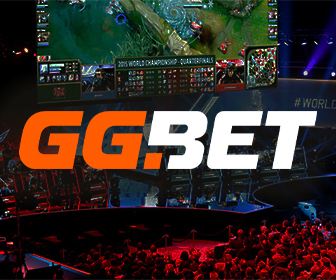Online casinos used to be digital versions of card tables and slot machines. Now, they’re starting to feel more like RPGs in disguise. We’re talking XP systems, daily quests, loot chests, avatars, and level-based progression—all things once reserved for video games, now fully embedded in casino platforms.
One standout example of this shift is supervip2541, which seamlessly blends the structure of traditional betting with a user experience that feels more like a mobile game than a gambling site. That’s not an accident. It’s part of a growing trend where online casinos are rethinking how to hook players, and video game mechanics are leading the charge.
So how exactly did the online casino industry hit “start” on gamification—and why does it work so well?
Why Gamification Matters in Casinos
Gamification isn’t just a buzzword. It’s a toolkit. In a nutshell, it’s the use of game-like elements in non-game settings to boost engagement. In gaming, this might mean a battle pass. In a casino, it might mean a loyalty ladder or unlockable badges.
The core principle? People like to win, even when they’re not winning money. They like progress. They like streaks. They like ticking boxes. Casinos that understand this have started building systems that reward everything from logging in to hitting certain milestones—even if no jackpot is involved.
It’s not just about flash either. Done well, gamification keeps users entertained longer, reduces churn, and gives platforms a chance to personalize the experience in fun, rewarding ways.
Experience Points and Loyalty Tiers: The New High Score Table
If you’ve ever played an RPG, you know the thrill of grinding XP to reach the next level. Online casinos are now mimicking that dopamine loop with tiered loyalty programs. Instead of slaying dragons or collecting orbs, players earn points through gameplay, deposits, or completing challenges.
These points typically unlock perks—think cashback bonuses, exclusive games, or faster withdrawals. But the real genius lies in how it mimics game progression. It’s not about just playing a game; it’s about leveling up in the platform itself.
This creates an emotional tether. Even if a user loses money, they often feel a sense of forward motion—like they’re building something. It’s psychological trickery that game developers have used for years. Casinos are simply applying the same logic.
Avatars, Storylines, and Personalization
Once upon a time, online gambling was all about the table and the cards. Now, it’s about you—or at least your virtual persona. Many modern platforms let players pick avatars, build profiles, or even follow light storylines tied to game progression.
This small detail matters more than you might think. Personalization builds attachment. When users can name their character, customize their background, or track their “journey” through the platform, the casino becomes more than just a tool for wagering—it becomes a place they belong to.
Some platforms go a step further and introduce seasonal events or themes, not unlike battle passes in Fortnite or Call of Duty: Warzone. Players might complete themed missions to unlock rewards, making the casino feel like a live, ever-evolving game world.
In-Game Currencies and Microrewards
Ask any gamer: grinding coins or collecting gems is half the fun. Online casinos have caught on. Many now offer in-game currencies that can be used to buy spins, unlock bonuses, or participate in tournaments.
Even though these currencies often can’t be cashed out, they add value. They allow players to “buy” choices, experience variety, and feel like they’re making progress. Crucially, this also softens the psychological hit of real-money losses. A player may have lost cash on a spin, but if they gained a few bonus coins to use elsewhere, it doesn’t feel like a total loss.
This approach builds retention through reward—a strategy mobile game developers have long mastered.
Achievements and Quests: Behavioral Nudges in Disguise
Another mechanic borrowed from video games? Daily quests and achievements. These show up in many casino dashboards now, with tasks like “Play three different slots” or “Win 5 rounds of blackjack.”
They’re fun on the surface, but they’re also behavioral nudges—designed to increase time on site and encourage players to explore different features. It’s the same principle that keeps players coming back to mobile games every day to collect rewards. A little reward here, a progress bar there—it all keeps users from wandering away.
Some sites even create long-term goals that can take weeks to complete, encouraging players to think in terms of a “campaign” rather than isolated sessions.
Leaderboards and Social Play
Gaming has always had a social component. Whether it’s beating your friend’s score or teaming up for a raid, people love competition. Online casinos have now embraced this dynamic with public leaderboards, multiplayer poker tables, and even chat-based tournaments.
Leaderboards bring an extra thrill—not just for the top prize, but for the status. It taps into the same motivation that drives people to post high scores online or earn Twitch badges. It’s about recognition. And when you’re recognized, you’re more likely to stick around.
Some casinos even let players form clubs or guilds to compete in challenges together—yes, just like MMORPG clans. This builds community and stickiness in a way traditional gambling rarely did.
How Mobile Gaming Paved the Way
The biggest influence on modern casino UX isn’t Las Vegas—it’s mobile gaming. Candy Crush. Clash of Clans. Genshin Impact. These titles taught developers that people will spend hours (and money) on microtransactions, time gates, and visual feedback loops.
Today’s online casinos have adopted many of these features:
- Timed bonuses and login streaks
- Spin-to-win mini games
- Flashy level-up animations
- Notification-driven engagement
These mobile-native elements make the experience feel slick, modern, and addictive—in some cases, too addictive. But that’s the whole point.
The Psychological Layer: Why It Works So Well
The gamification model works because it speaks to something very human: the desire to feel progression. Whether or not a player wins big, the journey itself feels worthwhile when it’s dressed in levels, badges, and celebratory pop-ups.
This creates an emotional feedback loop. Instead of being purely transactional, like placing a bet and waiting for a result, the whole experience becomes more immersive and rewarding. Even when the outcome isn’t financial, players feel like they’ve achieved something.
Platforms like lsm99online understand this deeply. They combine intuitive interfaces with layered reward systems that make every user action feel meaningful—whether it’s placing a bet, unlocking a perk, or reaching a new level. It’s part casino, part game, and all about keeping the player in motion.
The Flip Side: Responsible Design vs. Addictive Systems
Of course, gamification isn’t all sunshine and celebration screens. The same techniques that boost engagement can also blur the line between fun and compulsion. When designed without limits, gamified casino platforms risk encouraging overplay or masking losses behind progress bars.
This is why some experts call for transparent odds, cooldown timers, and opt-out settings for gamified elements. It’s about giving players agency and avoiding manipulative design, especially in younger or more vulnerable audiences who are used to gaming interfaces.
Just like the video game industry has had to reckon with loot box mechanics and addictive design, online casinos will need to walk the same tightrope.

Final Thoughts: The Future of Play Meets the Future of Pay
The rise of gamified UX in online casinos is more than just a passing trend—it’s a signal of what’s coming next. As lines blur between games and gambling, design will continue to play a crucial role in how these platforms attract, entertain, and retain users.
Whether you’re spinning for bonuses or climbing a VIP tier ladder, what’s clear is this: today’s most successful casino platforms don’t just let you play the game—they make you feel like part of it.
And that’s not just clever UX. That’s smart psychology, wrapped in fun, flashing lights.

